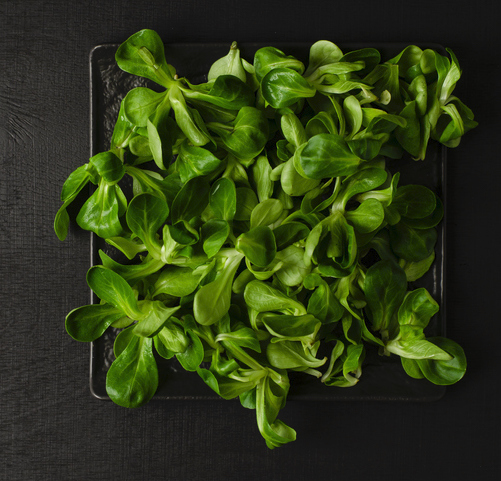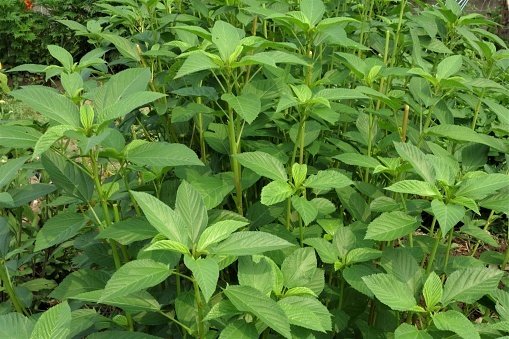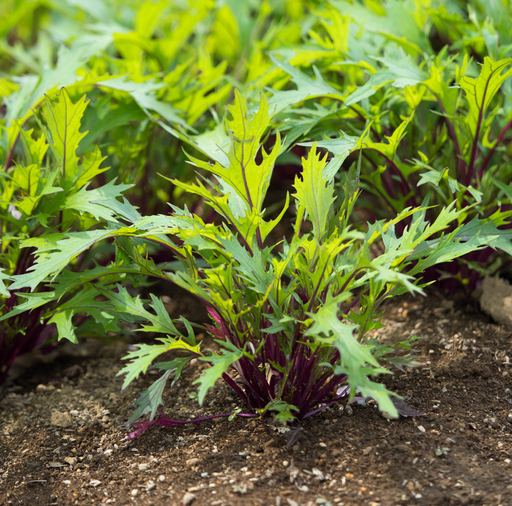4 Super Greens to Grow in Your Spring Garden
Getty/goir
Eating a diet rich in greens can help you improve your blood pressure, boost your immune system, enhance your cardiovascular health, and even sharpen your mental capabilities.
Greens are not just for salads. With different kinds grown all over the world, greens can taste sweet, bitter, spicy, or earthy and can be used in a wide variety of stir-fries, soups, pasta, smoothies, and more.
Not only are they delicious, but greens pack a powerful health punch. They are an important part of a healthy diet and are usually abundant in a variety of vitamins, minerals, and fiber. Eating a diet rich in greens can help you improve your blood pressure, boost your immune system, enhance your cardiovascular health, and even sharpen your mental capabilities.
Greens are easy to grow in the early days of spring and don’t take up much space. Whether you have a garden in your backyard or on a deck or balcony, you can grow greens. Try growing these four super greens to both support your health (mental and physical) and stock your larder.
Orach

Getty_Tonya Barnet
Orach is an ancient green experiencing a comeback after 4,000 years. Though its origins are difficult to pinpoint, it has been mentioned in the texts of ancient Roman philosophers and held the honor of being the most popular leafy green in Eurasia before spinach even appeared on the scene, according to the Baker Creek Heirloom Whole Seed Catalog.
Containing twice as much vitamin C as lemon, orach is jam-packed with vitamins, including magnesium, anthocyanins, phosphorous, iron, protein, zinc, selenium, tryptophan, vitamin K, carotenes, and dietary fiber. An immune-boosting powerhouse, orach may improve digestion, heart health and is a potent anti-inflammatory.
Orach can be eaten raw or substituted in any recipe requiring spinach or chard. This Thai Green Curry with Red Orach recipe showcases the green’s versatility. It comes in a dazzling array of colors, so not only will you get a vitamin-packed green, but it also looks lovely in the garden or in a planter on the back porch. Orach is adapted to both heat and cold and even grows in poor soil. Start seeds in the spring as early as the soil can be worked. Though it is slower to bolt than spinach in summertime heat, try to sow seeds in a place that gets partial shade. With germination temps of between 50 to 65 degrees Fahrenheit, seeds should sprout within seven to 14 days. Buy seeds from Baker Creek Heirloom Seeds.
Mache

Getty/Freelancer
Just one ounce of mache, aka corn salad, contains 18 percent of your daily requirement for vitamin A, almost as much vitamin C as an orange, and as much iron as spinach. Its strong antioxidant effect helps improve immune function and can be a powerful aid in fighting colds and flu. It may also help lower blood pressure, improve eye health and brain function, and ease osteoporosis.
With its slightly nutty flavor and buttery soft texture, mache is a versatile salad green that is popular with foodies and chefs across the country. Try this Mache and Herb Power Salad to take advantage of the deeply nutritious greens and spring herbs.
This tender green is an excellent cold-weather crop and doesn’t require much care. It is so cold-hardy that it can even be grown in winter and can even withstand temperatures below zero. Though it often grows wild in cornfields and can be foraged, mache can also be grown in your garden or in a container. Since warmer temps can slow germination, it’s best to sow mache seeds in the ground as soon as you can work the soil. Since it is commonly grown in the U.S., seeds aren’t hard to find in local garden centers or from online vendors.
Molokhia

Getty/Bungoume
Molokhia—or Mulukhiyah, molohiya, mloukhiya, Egyptian Spinach, or Jute depending on where you are in the world—is a highly nutritious green common in Middle Eastern and Egyptian cuisine. It provides loads of fiber, potassium, iron, calcium, magnesium, phosphorous, and selenium, as well as vitamins C, E, K, A, B6, and niacin. This supergreen reportedly lowers blood pressure, improves circulation, digestion, sleep, bone health, and eyesight, as well as boosts the immune system, and reduces inflammation.
With a texture akin to okra, molokhia is usually made into a soup or stew and can be eaten alone or with a protein. Though it is perfect for planting in cool springtime temperatures, unlike most other greens, it thrives in the summer heat! The seeds can be sown directly in the ground in the spring after all chance of frost has passed and after 60 days harvested throughout the summer. When cold fall weather arrives, the green begins producing small yellow flowers and starts to bolt.
Molokhia is not commonly grown in the U.S, however, you can find seeds on Etsy. Try this recipe for Jute Mallow Soup to get all the benefits of this supergreen.
Mizuna

Getty/y-studio
Mizuna—or Japanese mustard greens, spider mustard, water greens, or kyona—is a cruciferous vegetable related to broccoli, cauliflower, kale, and Brussels sprouts. Cultivated for centuries in Kyoto, Japan, mizuna is a cornerstone of Japanese and Buddhist culinary traditions.
Rich in vitamins A, C, and K, mizuna is a highly nourishing green. It contains multiple antioxidants, including anti-inflammatory and anti-cancer kaempferol and quercetin. What’s more, mizuna’s high levels of beta carotene, lutein, and zeaxanthin can improve eye health by fighting cataracts, diabetic retinopathy, and protecting your retina from oxidative damage and age-related macular degeneration.
With its slightly bitter and spicy flavor, mizuna can be used raw in salads or cooked or pickled. The fresh peppery flavor complements a variety of other greens and salads, and it is delicious in soups, stir-fries, pasta, and even on top of pizza. For a vegetarian pasta dish, try this Mizuna Pesto recipe.
One of the most bolt-resistant brassicas, mizuna is an excellent cold-weather crop and should be sowed early in spring. Find mizuna seeds at Johnny’s Selected Seeds.
For more on greens, also read “Eat Leafy Greens for a Sharper Brain.”


